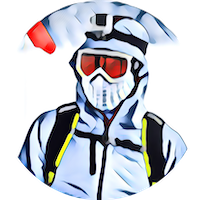If you’re new to ultra-running, this might be worth reading and comes from my personal experience with this intriguing sport. You may even want to re-read it before your next big race.
Ultra-running is a hard sport. If it’s easy, then everyone would be doing it. Like running a marathon! That was tongue in cheek; don’t get offended. Do you know that there are fewer runners who have run 350km and beyond continuously than there are billionaires in the world?
I rarely run a same race twice, but somehow I finished the Delirious WEST 200 miler 3 times. I don’t really know what drew me to this race. Maybe because the course is pristinely interesting. Maybe because almost everyone involved with this race is awesome in their own ways. Maybe because it’s a hard race, especially with February potentially getting stinky hot in Western Australia, and ultra-runners are suckers for punishment. Now that they’ve moved the race to April, the weather would be softer on runners and everyone else.
Anyhoo…. 99% of running photos floating around the interwebs do not really reflect the reality of running. They’re just too pretty, too often staged. Nothing wrong with that, but they do send a biased signal to those who don’t run. I think if most photos showed runners in sufferance, shoe companies wouldn’t be able to sell many shoes, nor races many bibs – except of course the adventure races, which make suffering the product that they sell.
I’d like to share something more real, more personal, but not alien at all to experienced ultrarunners. This photo was from my third attempt of this race. I was moving towards the half-way 100 mile point, about to hit the second night without sleep, and felt a sharp drop in energy level. My legs instantly turned to jelly and that fire that had been burning in the core was gone. The tracker was scratching my shoulder, hence the piece of white cloth to reduce friction. The terrain didn’t lend itself to a dirt nap, and the snakes might be out and about as the intense daytime heat was dissipating. So there I was… conveniently leaning on the “generous shoulders” of a dead stump for a 10′ quickie nap. Some cheeky runner managed to take a shot while I was oblivious to the surroundings.
Experienced ultrarunners do this sort of thing all the time. The more we do it, the more normalised and ingrained this attitude and behaviour becomes.
Some insights for new ultra-runners:
– With ultra-running, as with any long arduous task, it’s impossible to maintain a high level of energy throughout. You’ll inevitably hit a low, actually quite a few lows. But if you can ride out these lows, the highs will come.
– To finish these races, you need to be able to ride out these lows. You need a strong reason. After all, it’s only a run; it can be very tempting to DNF – which is exactly what I’ve done a few times in races.
– When you quit, there always seems to be a valid reason. Your ego won’t be happy unless there is one. So you kinda talk yourself into quitting. However, the fundamental underlying reason is almost always either mental weakness or inability to meet cutoffs. When I say “You” here, I actually mean “I”. I can’t speak for other runners.
– The lower the lows, the higher the highs. That’s emotional, and chemical, physics.
– You spend a lot of time on your own in these races. Great opportunity to reflect and look more within than without. Extremely valuable insights – in running and in life alike – come through suffering, not comfort.
– When you’re dead exhausted, nothing looks good on the outside, even the prettiest of scenery. Except sunrises. Sunrises have a magical power to lift you out of exhaustion.
– When you’re in pain, the only thing that should warrant your attention is that pain, that suffering. Don’t run away from the pain. Watch it, respect it, but don’t respond to it. That way, you may unlock joy and happiness. Such a paradox!
– Running is a simple sport and a great training ground for life. The medals can be fun; but at the end of the day, they’re not worth all that effort you put in.
I’ve done a few interviews in relation to running, and most interviewers really just focused on the achievements and shiny side of running. I just want to say that those are not the reasons that draw ultrarunners like me to this sport. The struggle I put myself through in order to find a path forward for personal growth IS the main reason why I run these races. Every time I stand on that start line, I’m attempting to move forward in some way. Sometimes I do. Sometimes I don’t and need to try again. That’s the idea. Friendships, scenery, adventure, the highs – they’re great bonuses.
In my eyes, a true runner is a lifelong learner. These runners are curious about themselves, and seek to explore the depths of who they are. And they intuitively sense the suffering and rewards that ultra-running promises give them a perfect vehicle for this exploration – a great and worthy adventure indeed!
Disclaimer: This is not a Delirious promo, just genuine reflections from a guy who does run around a little bit. But it’s a wonderful race.

